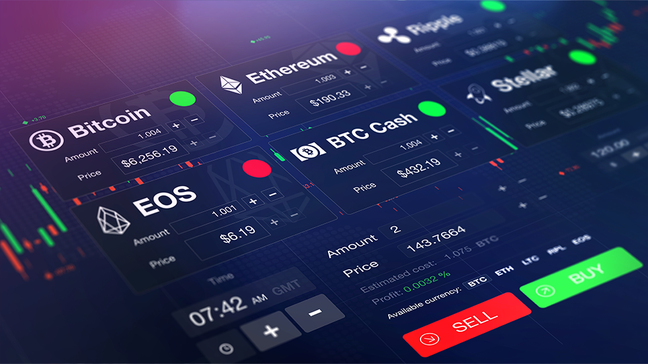Exploring the Future of Crypto Trading Platforms

Exploring the Future of Crypto Trading Platforms
In recent years, the cryptocurrency market has witnessed explosive growth, prompting a rise in the number of crypto trading platforms available to users. These platforms serve as gateways for individuals and institutions looking to buy, sell, or trade various cryptocurrencies. If you’re interested in understanding the complexities of these platforms, Crypto Trading Platforms click here to explore further. This article delves into what makes these platforms tick and highlights key features and considerations for users.
The Evolution of Crypto Trading Platforms
Crypto trading platforms have dramatically evolved since the inception of Bitcoin in 2009. Initially, these platforms were rudimentary, lacking user-friendly interfaces and advanced trading features. However, with the increasing adoption of cryptocurrencies, these platforms have rapidly advanced to accommodate a wider audience.
Today, users can choose between centralized exchanges (CEX) and decentralized exchanges (DEX). CEXs like Binance and Coinbase offer a more streamlined experience with high liquidity, while DEXs like Uniswap and SushiSwap provide users with greater control over their assets and privacy.
Key Features to Look for in Crypto Trading Platforms
When selecting a crypto trading platform, users should consider several features to ensure a safe and efficient trading experience:
1. Security Measures
Security is paramount in the world of crypto trading. Choose platforms that implement robust security protocols, such as two-factor authentication (2FA), cold storage for funds, and regular security audits to protect against hacks and vulnerabilities.
2. User Interface
A user-friendly interface can significantly enhance the trading experience, especially for beginners. Look for platforms that offer simple navigation, clear charts, and intuitive features that make it easy to execute trades.
3. Liquidity
Liquidity is vital for traders, as it affects the ability to buy or sell assets quickly without significantly impacting the price. Platforms with high trading volumes generally provide better liquidity.
4. Asset Variety
The more cryptocurrencies a platform supports, the more trading opportunities it offers. Ensure the platform has a diverse selection of coins and tokens, including established assets and emerging projects.
5. Trading Fees
Be mindful of the trading fees associated with each platform. Some platforms charge a flat fee per trade, while others take a percentage of the trade. Understanding these costs is crucial for effective trading strategy planning.
Centralized vs. Decentralized Platforms
Choosing between centralized and decentralized platforms can significantly impact your trading experience:

Centralized Exchanges (CEX)
CEXs are operated by third-party entities that facilitate transactions between buyers and sellers. They offer various advantages, including ease of use, high liquidity, and extensive customer support. However, users must trust the exchange to manage their funds securely. Notable examples of CEXs include:
- Binance
- Coinbase
- Kraken
Decentralized Exchanges (DEX)
DEXs operate without a central authority, allowing users to trade directly from their wallets. This method enhances privacy and control over one’s funds. However, DEXs can sometimes suffer from lower liquidity and slower transaction speeds. Notable DEXs include:
- Uniswap
- Balancer
- Curve Finance
The Importance of Regulatory Compliance
As the crypto market matures, regulatory scrutiny is increasing. Users should prioritize platforms that comply with local regulations to ensure that their activities are legal and secure. Regulatory compliance helps protect users from potential fraud and enhances the overall integrity of the trading environment.
Future Trends in Crypto Trading Platforms
The landscape of crypto trading platforms is dynamic and ever-evolving. Here are some trends that could shape the future of these platforms:
1. Adoption of AI and Machine Learning
The integration of artificial intelligence (AI) and machine learning into trading platforms can enhance trading strategies by analyzing large datasets and predicting market trends. Such advancements can provide traders with valuable insights that improve decision-making.
2. Increasing Focus on User Education
As more beginners enter the crypto space, platforms are likely to enhance their educational resources. Offering tutorials, webinars, and market analysis can empower users to make informed trading decisions.
3. Multi-Asset Trading
The demand for platforms that allow the trading of various asset classes (including stocks, ETFs, and commodities alongside cryptocurrencies) is expected to rise. Such multi-asset platforms can provide users with diverse investment opportunities.
4. Enhanced Privacy Features
With growing concerns about data privacy, platforms may offer enhanced privacy features that allow users to trade without disclosing personal information. Innovations like zero-knowledge proofs could come into play, enabling secure trades without revealing user data.
Conclusion
Crypto trading platforms are essential for anyone looking to venture into the world of cryptocurrencies. By understanding the differences between centralized and decentralized platforms, the features that matter most, and the evolving landscape, traders can make informed decisions. As the market continues to grow and innovate, staying updated on the latest trends and developments will be crucial for successful trading.
